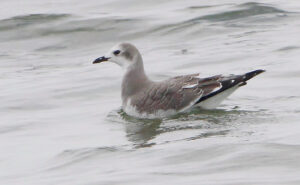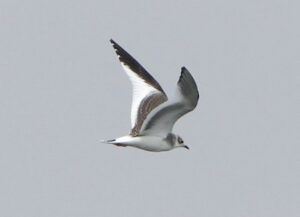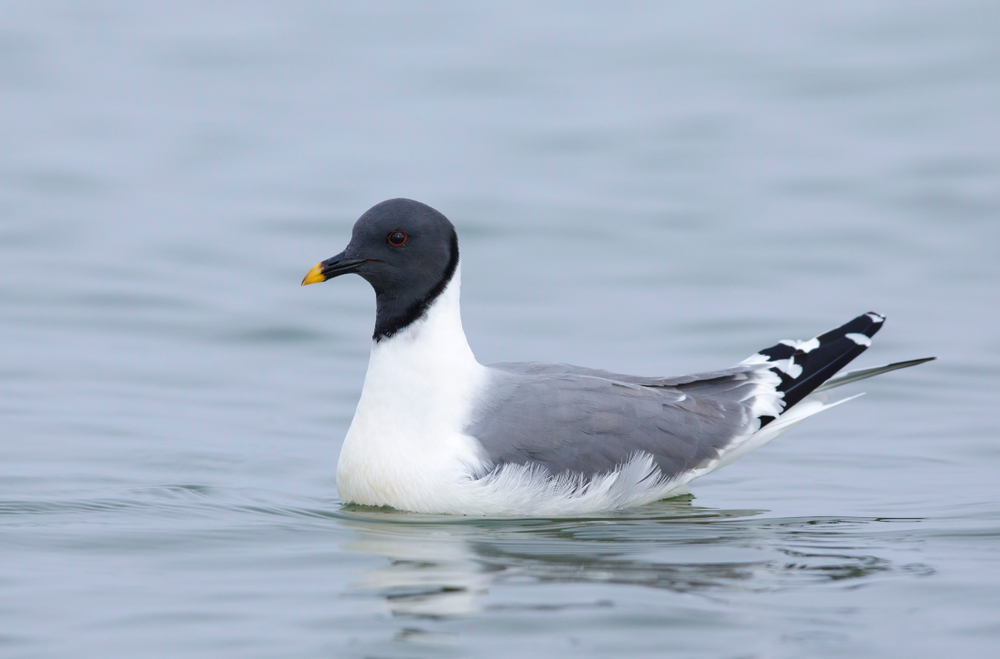Sabine’s Gull, Xema sabini
Bill Rowe
This week we introduce a bird that is a rarity in the Midwest: a handsome little Arctic gull named after a distinguished Irish scientist and naturalist, Edward Sabine, who apparently pronounced his name to rhyme with “cabin.” In the nesting season, Sabine’s Gull graces marshy tundra regions around the Northern Hemisphere, in the high latitudes of Alaska, Canada, Greenland, Norway, and Siberia; it then migrates south a very long way to two main wintering areas, one along the west coast of South America, centered on Peru, and the other along the southern Atlantic coast of Africa. En route it is mainly oceanic, migrating in flocks along our Pacific and Atlantic coasts—except for a small minority that choose an overland passage and end up visiting lakes, rivers, and reservoirs all over the United States, just one or a few at a time and mostly in fall. Thus, at most inland locations it’s a rare bird, but one that shows up with some regularity, and birders who live near any large bodies of water soon learn to keep their eyes open for the possibility of a Sabine’s Gull in September and October. Worldwide, this is one of those birds whose total population is very hard to estimate, but the numbers counted during migration on our west coast are robust enough (in the tens of thousands) to make it seem a species of Least Concern.
IDENTIFICATION: Since gulls can be complicated to identify, it comes as a relief that Sabine’s Gull is almost unmistakable. It is small, the size of a Bonaparte’s Gull, and in flight its bold tricolored wing pattern (see photo below, right) is unlike that of any other species and identifies it as far as it can be seen. On the water, a closer look may be needed, but it’s still a distinctive bird. Adults, seldom seen here in the interior, have a dark gray head bordered by a black collar and a small black bill with a bright yellow tip. Juveniles, which provide most of our sightings, are a soft, darkish gray-brown above, with a white face and throat and a slender black bill. If in doubt, wait for the bird to flash a wing.
ST. LOUIS STATUS: A rare but somewhat expectable visitor to larger rivers and lakes, mainly in September and early October; the premier location in our area is Carlyle Lake, but it has shown up in many other spots as well. One adult, only the third ever reported in Missouri, is present at this writing at Riverlands Migratory Bird Sanctuary.
Learn more and listen to the calls of Sabine’s Gull here.


Juvenile
Photo Credit: Al Smith
Juvenile in flight
Photo Credit: Al Smith




